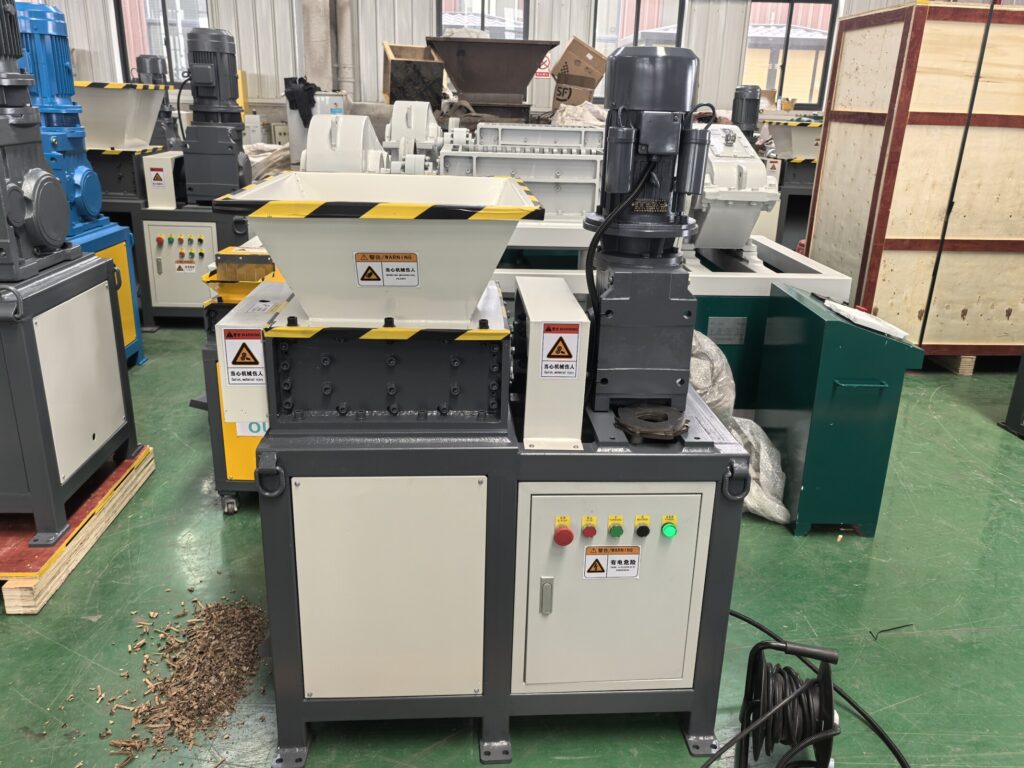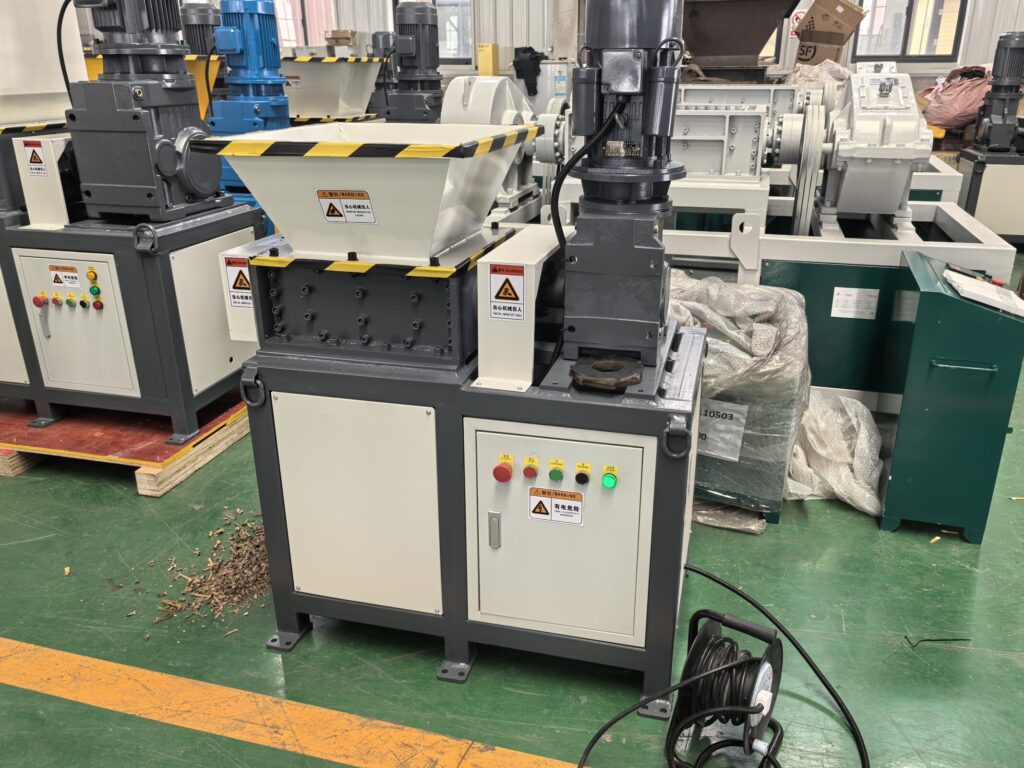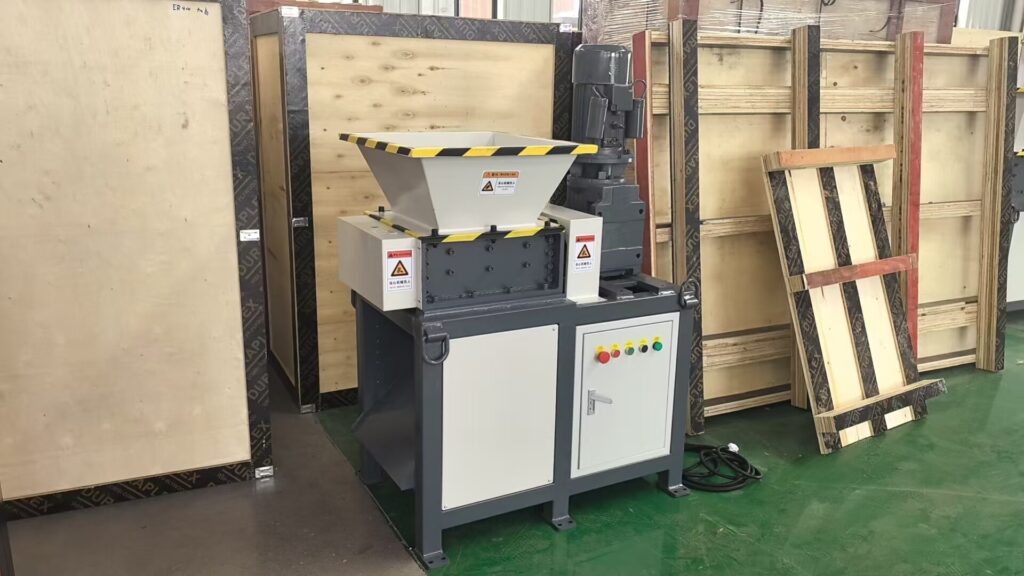What Is a Small Shredder?

A small shredder is a compact, portable machine designed to destroy paper documents, credit cards, CDs, and other materials to protect sensitive information from falling into the wrong hands. Unlike large industrial shredders, small shredders are ideal for home offices, small businesses, and personal use due to their space-saving design and ease of operation. These devices work by feeding paper or other materials through a set of sharp blades that cut them into strips or tiny particles, depending on the shredder’s security level. The most common types include strip-cut shredders (which slice paper into long strips), cross-cut shredders (which create confetti-like pieces for higher security), and micro-cut shredders (offering the highest level of security by turning documents into nearly unreadable particles). Small shredders typically handle a limited number of sheets at once, usually between 5 to 10 pages, making them perfect for everyday use without overwhelming capacity. Many modern small shredders also feature safety mechanisms like auto-stop sensors to prevent overheating or jams, ensuring smooth operation. Some models even come with silent or energy-efficient modes, making them suitable for home environments. Beyond paper, certain small shredders can also destroy credit cards, staples, and paper clips, adding extra convenience. Whether you need to dispose of old bills, confidential work documents, or personal records, a small shredder provides a quick and efficient way to maintain privacy and reduce clutter. Additionally, using a shredder supports eco-friendly practices by making it easier to recycle shredded paper. With various sizes, security levels, and price ranges available, choosing the right small shredder depends on your specific needs—whether it’s basic document disposal or high-security data protection. Investing in a small shredder is a smart step toward better organization and enhanced security in both personal and professional settings.
Why Use a Small Shredder?

A small shredder is an essential tool for anyone concerned about privacy, security, and efficient waste management. With identity theft and data breaches on the rise, destroying sensitive documents is no longer optional—it’s a necessity. A small shredder provides a convenient and cost-effective way to dispose of confidential papers, credit cards, and even CDs without relying on third-party services. Unlike bulkier industrial shredders, compact models fit easily in home offices, small workspaces, or even dorm rooms, making them accessible for everyday use. One of the biggest advantages of using a small shredder is enhanced security. By turning documents into unreadable strips or confetti-like particles, these machines prevent dumpster divers or unauthorized individuals from piecing together personal information such as bank statements, medical records, or tax documents. Cross-cut and micro-cut shredders offer even higher security levels, ensuring that sensitive data cannot be reconstructed. Another key benefit is organization—shredding unneeded paperwork reduces clutter and frees up storage space. Small shredders also promote environmental responsibility by making it easier to recycle shredded paper, as many recycling programs accept securely destroyed documents. Modern shredders come with user-friendly features such as auto-feed technology, jam prevention, and quiet operation, making them practical for daily use. For small businesses, a compact shredder helps comply with data protection regulations by securely disposing of client records, invoices, and proprietary information. Even at home, shredding old bills, receipts, and expired IDs minimizes the risk of fraud. Additionally, some small shredders can handle more than just paper—many can destroy credit cards, staples, and paper clips, adding versatility. With affordable pricing and low maintenance requirements, a small shredder is a smart investment for long-term security and efficiency. Whether for personal use or a small office, owning a shredder ensures peace of mind, knowing that sensitive information is permanently destroyed. In a world where data privacy is increasingly critical, a small shredder is a simple yet powerful tool to protect what matters most.
How to Use a Small Shredder: A Simple Guide for Safe and Efficient Operation

A small shredder is an easy-to-use device for destroying sensitive documents, but proper operation ensures optimal performance and longevity. Before using your shredder, read the manufacturer’s instructions to understand its specific capabilities and limitations. Start by placing the shredder on a flat, stable surface near a power outlet, ensuring proper ventilation to prevent overheating. Most small shredders have a power switch or automatic sensor that activates when you insert paper – simply turn it on and feed documents slowly into the slot, being careful not to exceed the maximum sheet capacity (usually 5-10 sheets at once). For best results, remove staples and paper clips unless your model specifically states it can handle them. Avoid shredding very thick materials like cardboard or laminated papers unless your machine is designed for such items. If the shredder jams, immediately turn it off and unplug it before carefully removing stuck paper using the reverse function if available. Never force paper through or attempt to clear jams with sharp objects that could damage the blades. Regular maintenance is key – empty the waste bin frequently to prevent overflow and occasionally apply shredder oil to keep the blades lubricated (check your manual for recommended oil types). For safety, keep the shredder away from children and pets, and never put fingers near the intake while operating. When not in use, turn off and unplug the device to save energy and prevent accidental activation. Remember that different shredders have different run times – most small models need cooling breaks after continuous use (typically 3-5 minutes of operation). For security purposes, consider alternating between strip-cut and cross-cut shredding depending on document sensitivity. By following these simple steps, you’ll maximize your shredder’s efficiency, extend its lifespan, and maintain top security for all your document destruction needs while avoiding common operational problems. Always refer to your specific model’s manual for any unique features or requirements.
